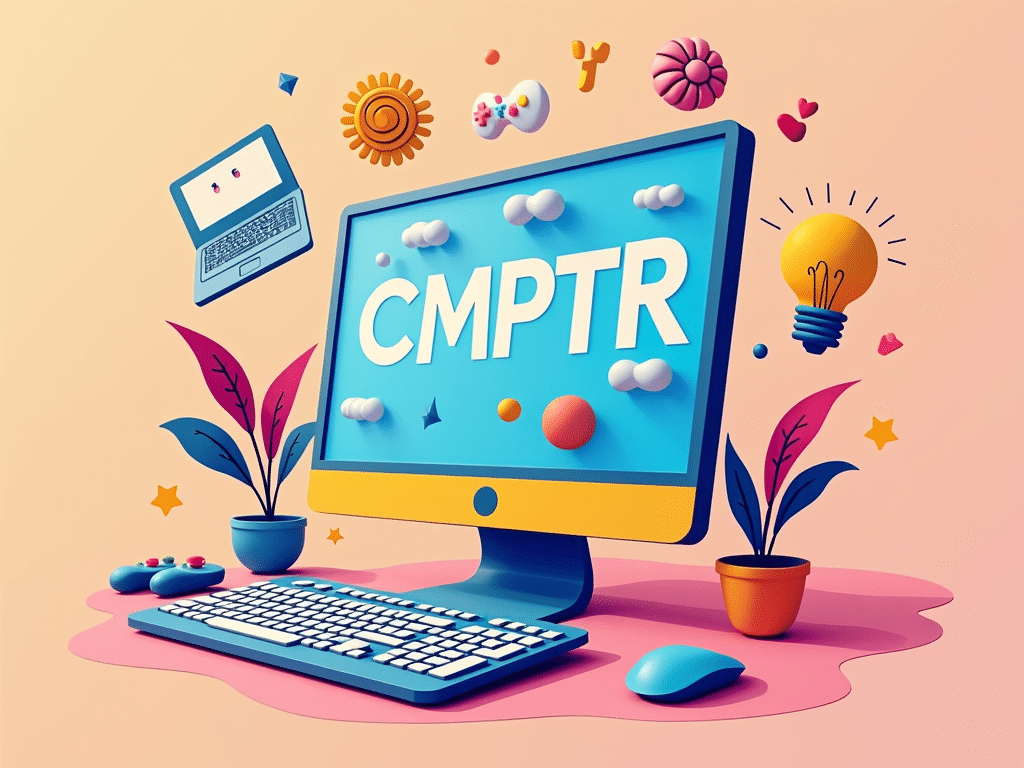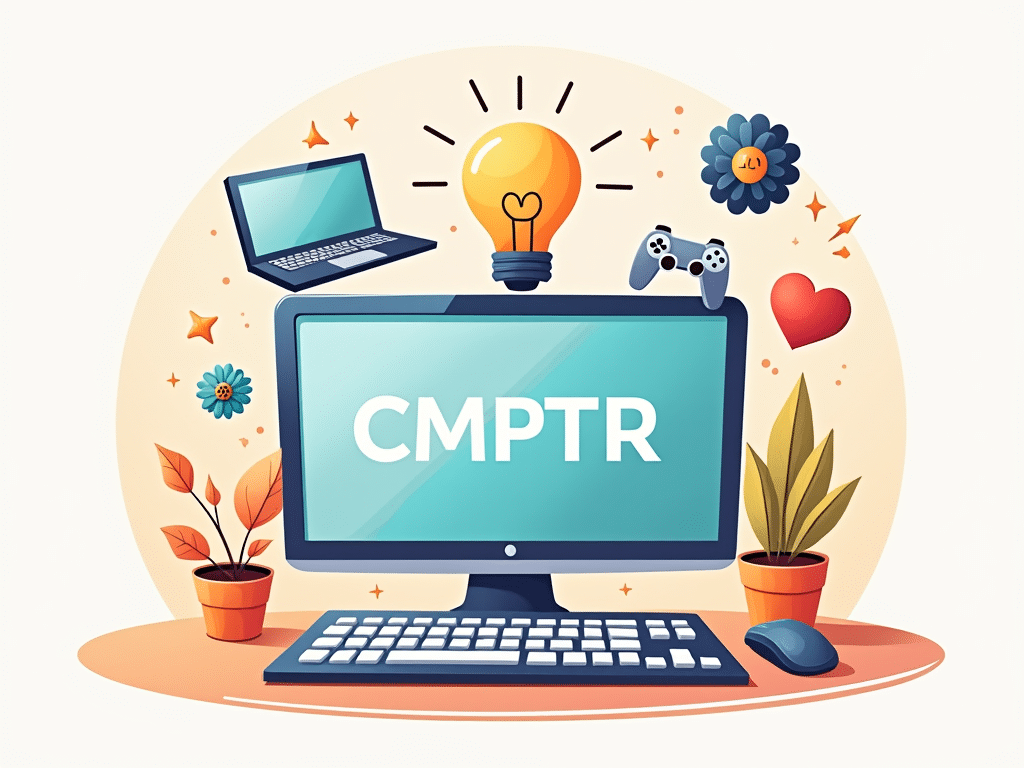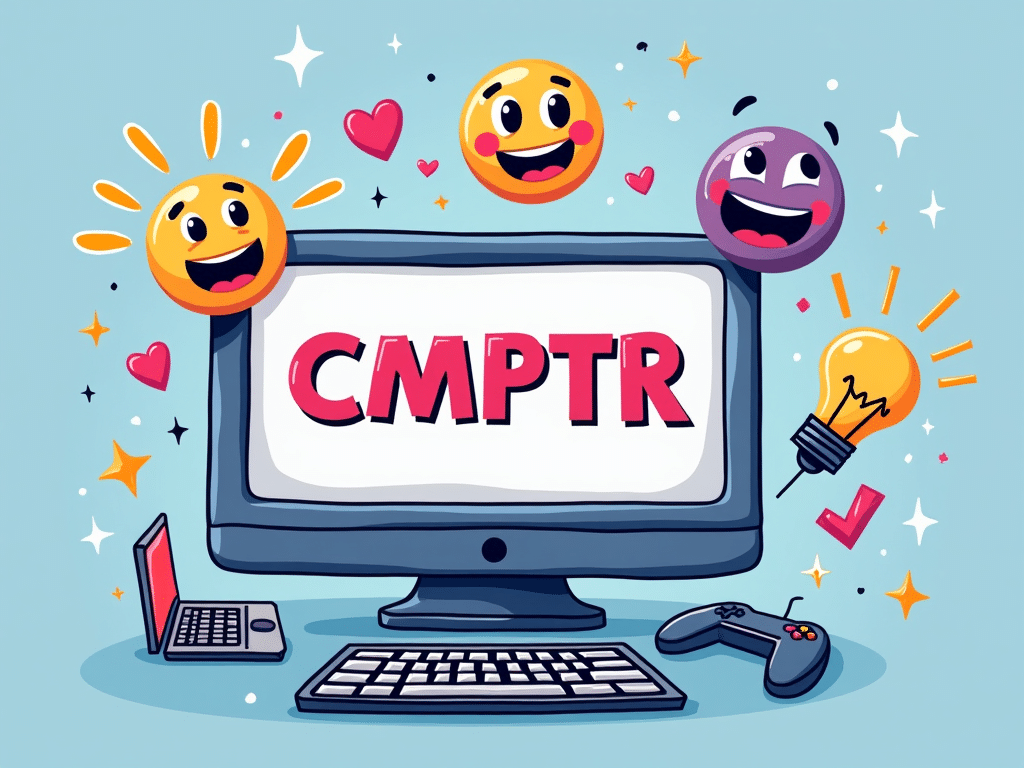In the fast-paced world of digital communication, abbreviations like “CMPTR” have become increasingly common. Whether you’re texting friends, posting on social media, or chatting in online forums, understanding these shorthand terms is key to effective communication. So, what exactly does “CMPTR” mean, and how is it used in various contexts?
| Key Takeaways |
|---|
| 1. CMPTR is commonly used as an abbreviation for “computer” |
| 2. It’s often used in informal digital communication |
| 3. The abbreviation can have different meanings in specific contexts |
| 4. CMPTR is part of a broader trend of shortening words in online communication |
| 5. Understanding context is crucial for interpreting CMPTR correctly |

Common Meanings of CMPTR
The most common meaning of “CMPTR” is simply as an abbreviation for the word “computer.” In this context, it’s used to save time and effort when typing, especially on mobile devices where typing can be more cumbersome.
For example:
- “I need to buy a new CMPTR for work.”
- “Can you help me fix my CMPTR? It’s running slow.”
This usage is similar to other tech-related abbreviations like “CNC” (Computer Numerical Control) or “MGMT” (Management).
Other Potential Meanings
While “computer” is the most common interpretation of CMPTR, the abbreviation can have other meanings in specific contexts:
- Competitor: In business or sports contexts, CMPTR might be used to refer to a competitor.
- Comptroller: In financial or government settings, CMPTR could be shorthand for “comptroller,” a management-level position responsible for financial oversight.
- Compactor: In industrial or construction fields, CMPTR might refer to a compactor, a machine used to compress materials.
It’s important to consider the context in which CMPTR is being used to interpret its meaning accurately.
Also read: Spill The Tea
Usage in Digital Communication

CMPTR is most commonly used in informal digital communication, such as:
- Text messages
- Social media posts (Twitter, Facebook, Instagram)
- Online forums and chat rooms
- Casual emails or instant messages
In these contexts, using abbreviations like CMPTR is a way to save time and keep communication concise. It’s part of a broader trend of shortening words and phrases in online communication.
However, it’s important to know your audience when using abbreviations like CMPTR. In more formal contexts, such as professional emails or academic writing, it’s generally best to use the full word “computer” to ensure clarity and professionalism.
Also read: Delulu Meaning
The Trend of Abbreviations in Online Communication
The use of abbreviations like CMPTR is part of a larger trend in digital communication. As more of our interactions move online, there’s a growing need for quick, efficient communication. Abbreviations serve several purposes:
- Saving time: Typing out full words and phrases can be time-consuming, especially on mobile devices.
- Saving space: Platforms like Twitter have character limits, making abbreviations essential for fitting more information into a single post.
- Establishing group identity: Using niche abbreviations can signal belonging to a particular community or in-group.
However, there are also potential drawbacks to relying too heavily on abbreviations:
- Confusion: Not everyone may be familiar with the same abbreviations, leading to misunderstandings.
- Lack of clarity: Abbreviations can sometimes be ambiguous, with multiple potential meanings.
- Unprofessionalism: In formal contexts, overusing abbreviations can appear unprofessional or immature.
How to Use CMPTR Effectively

If you want to use CMPTR in your digital communication, here are some tips to do it effectively:
- Know your audience: Use CMPTR with friends or in casual online settings where abbreviations are common. In professional or formal contexts, stick to the full word “computer.”
- Provide context: If you’re using CMPTR for the first time in a conversation, make sure the context clearly indicates you’re talking about computers.
- Be consistent: If you use CMPTR, stick with other tech-related abbreviations for consistency. For example, you might also use “SW” for software or “HW” for hardware.
- Use sparingly: Don’t overuse abbreviations. A message full of shorthand can be hard to read and understand.
- Be prepared to explain: If someone asks what CMPTR means, be ready to explain it’s short for “computer.”
Remember, the goal of using abbreviations like CMPTR is to make communication more efficient, not to confuse your audience.
Also read: Manufacture and Manufacturer
CMPTR in Different Languages and Cultures
While CMPTR is primarily used in English-language digital communication, similar abbreviations exist in other languages. For example:
- In Spanish: “ORDNDR” (from “ordenador”)
- In French: “ORDI” (from “ordinateur”)
- In German: “RCHNR” (from “Rechner”)
These abbreviations serve the same purpose as CMPTR – to shorten the word for “computer” in digital communication.
It’s worth noting that the use of such abbreviations can vary widely between cultures and age groups. What’s common in one country or among one demographic might be unfamiliar to others. This is similar to how expressions like “KKKK” (a form of laughter) or “HBU” (How about you?) are used differently across cultures and languages.
Expert Tips for Digital Communication
As someone who’s been studying and using digital communication for years, here are some expert tips for navigating the world of online abbreviations:
- Stay updated: Online language evolves quickly. Keep an eye on new abbreviations and their meanings.
- Use context clues: If you encounter an unfamiliar abbreviation like CMPTR, look at the surrounding text for clues to its meaning.
- Ask when unsure: Don’t be afraid to ask what an abbreviation means. Most people are happy to explain.
- Balance efficiency and clarity: While abbreviations can save time, make sure your message is still clear and understandable.
- Respect platform norms: Different platforms have different communication styles. What’s appropriate on Twitter might not work on LinkedIn.
Also read: WGAT
Conclusion
CMPTR, primarily used as an abbreviation for “computer,” is just one example of how language adapts to the needs of digital communication. While it can be a useful shorthand in casual online interactions, it’s important to use it appropriately and be aware of your audience.
Understanding abbreviations like CMPTR is crucial for effective digital communication. However, it’s equally important to know when to use full words for clarity and professionalism. As with many aspects of language, context is key.
As digital communication continues to evolve, new abbreviations and shorthand will undoubtedly emerge. Staying informed about these changes can help you communicate more effectively in the digital world. Whether you’re discussing computers, management (MGMT), or any other topic, being fluent in digital shorthand is an increasingly valuable skill.
Remember, the goal of communication is always to be understood. Whether you choose to write “CMPTR” or “computer,” make sure your message is clear and appropriate for your audience. Happy typing!







